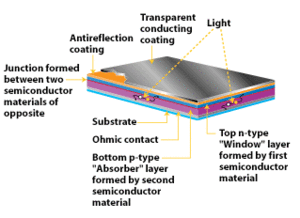
Oxford Photovoltaics reveals plan to raise £3.5m in funding to make solar glass a reality
A UK start-up has developed an innovative new form of “solar glass” that could allow glass-fronted commercial buildings such as skyscrapers to generate enough energy to power their lighting and IT systems.
Spun out from Oxford University in late 2010, Oxford Photovoltaics (PV) has combined a dye-based thin film solar cell with glass substrates to produce tinted glass that simultaneously acts as a solar generation system.
“We screen print metal oxides, dyes, plastics and polymers directly on to glass,” explained Kevin Arthur, chief executive of the company. “Light reacts with the dye to create a current that we collect through two terminals, just like a standard battery.”
He added that the glass could be tinted to any colour or made opaque, providing a flexible renewable energy option for architects and builders.
The technology has been successfully developed in the lab and Arthur is in San Francisco this week as part of the UK’s Clean and Cool Mission with a view to raising £3.5m in venture capital funding to support the development of a pilot production line.
“We have small prototype cells that are 10cm by 10cm, but we want to move to a full scale pilot production line that can make panels that are two metres by three metres,” he said, adding that the company aims to complete its funding round later this year and have its first batch of solar glass panels commercially available by the third quarter of 2013.
“We are under a lot of pressure from architects we have presented the technology to. They love this idea and are asking us to go faster.”
Arthur predicted that solar glass technology has the potential to undercut conventional silicon-based solar panels on price.
“There are a lot of cost advantages to thin film solar technologies,” he argued. “Because you are basically screen printing, production costs are much lower than for conventional solar cells and the cost of the materials is also falling. But most importantly once a company has decided to have a glass façade on their building they have already decided to install our substrate.”
Arthur was reluctant to predict the precise cost of the technology when it is produced at commercial scale, but he revealed that modelling done by the company suggested the system could produce solar power at a cost of just 35 cents per watt.
“We envisage a time relatively soon when this technology will be able to operate without subsidy,” he said.
via Business Green – James Murray ᔥ
Bookmark this page for “Solar glass” and check back regularly as these articles update on a very frequent basis. The view is set to “news”. Try clicking on “video” and “2” for more articles.
>








